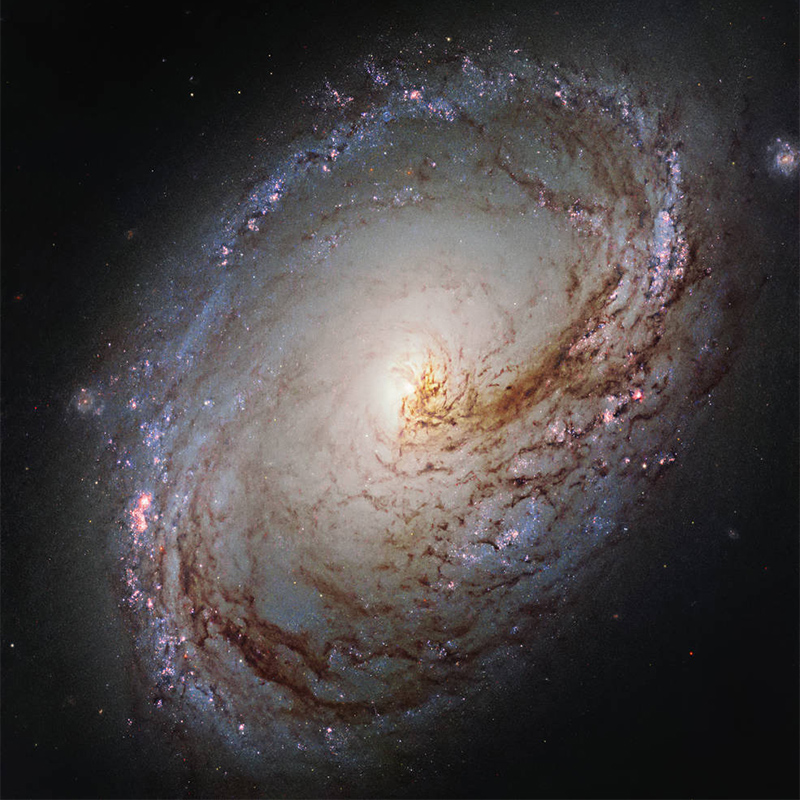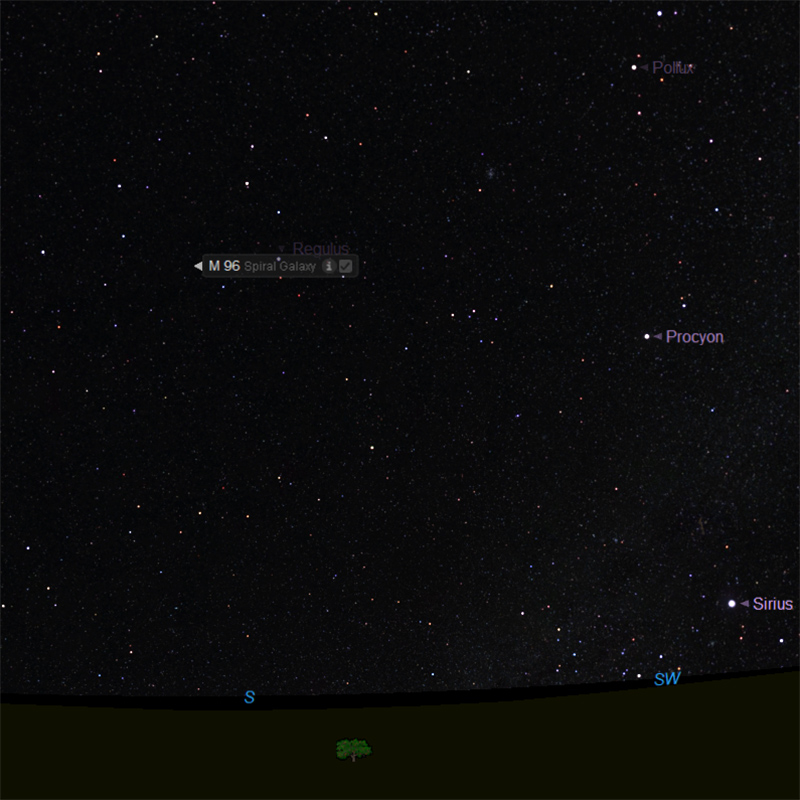M96

Credits: ESA/Hubble & NASA and the LEGUS Team; Acknowledgment: R. Gendler)
In this infrared and visible-light image from Hubble, the spiral galaxy M96 resembles a giant maelstrom of glowing gas, rippled with dark dust that swirls inward toward the nucleus.
Its dust and gas are unevenly spread throughout its weak spiral arms, which are asymmetrical because of its gravitational interaction with neighboring galaxies.
M96 is also remarkable for the location of its core, which is not exactly at the galactic center.
Because it is gravitationally bound to nearby galaxies, M96 is considered a member of a galaxy group.
This collection of galaxies, known as the M96 Group, also includes the bright galaxies M105 and M95, as well as a number of smaller and fainter members.
It is the nearest group to Earth containing both bright spirals and a bright elliptical galaxy.
M96 was discovered in 1781 by Pierre Méchain, the French astronomer and cartographer. It is located 35 million light-years from Earth in the constellation Leo.
The galaxy has an apparent magnitude of 10.1 and appears very dim in the sky.
Facts about M96 by Keith Turnecliff
The cluster is located 34,000 light-years from Earth in the constellation Canes Venatici. It has an apparent magnitude of 6.2 and can be spotted using a pair of binoculars.
Messier 95, also known as M95 or NGC 3351, is a barred spiral galaxy located about 33 million light-years away in the zodiac constellation Leo.
It was discovered by Pierre Méchain in 1781, and catalogued by fellow French astronomer Charles Messier four days later. On 16 March 2012, a supernova was discovered in M95.
It can be observed using a medium-sized telescope most easily during April.

Best viewed with resolution 1920 x 1080.
Credits: Image courtesy of Starry Night Pro Plus 8, researched and implemented by Keith Turnecliff.